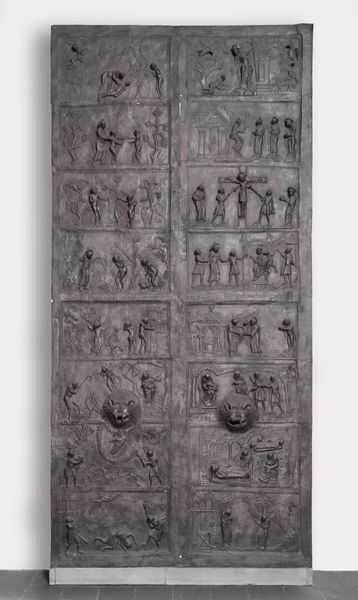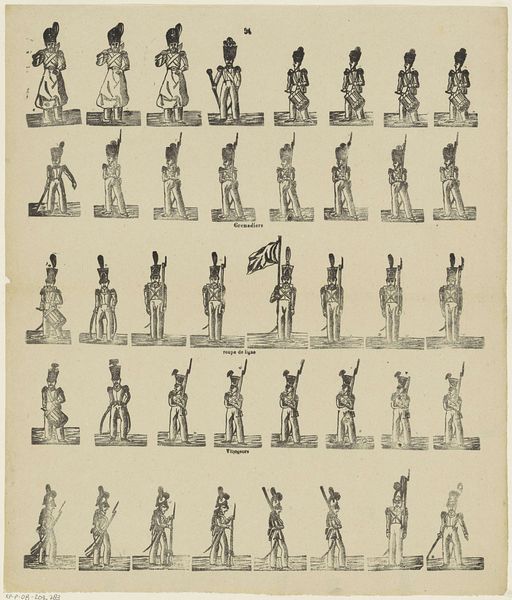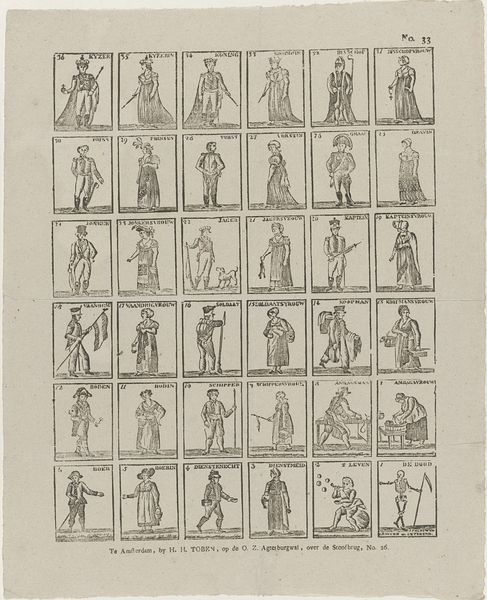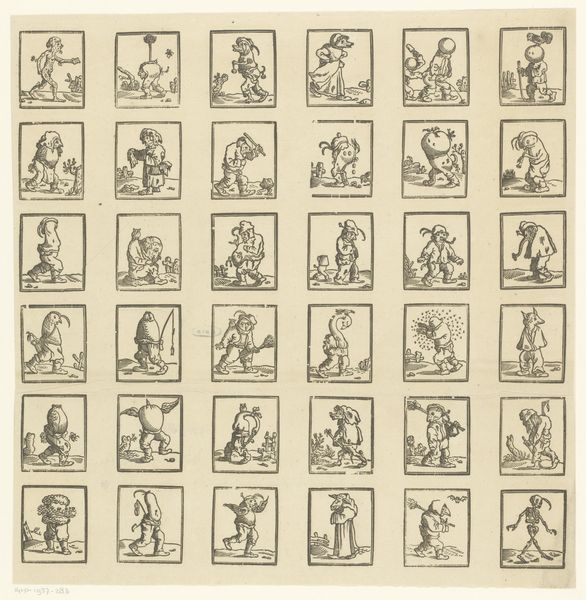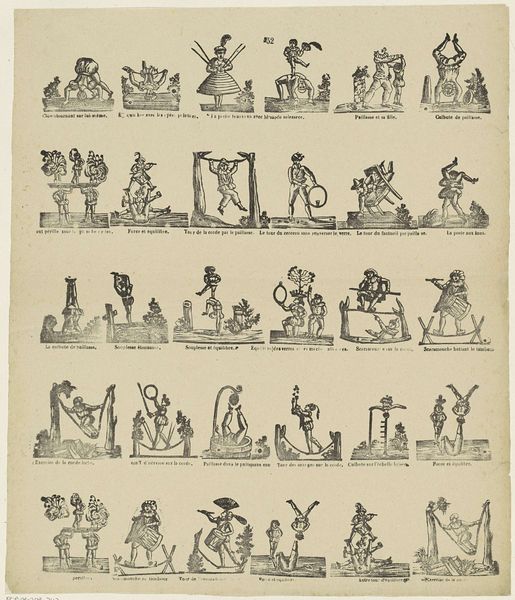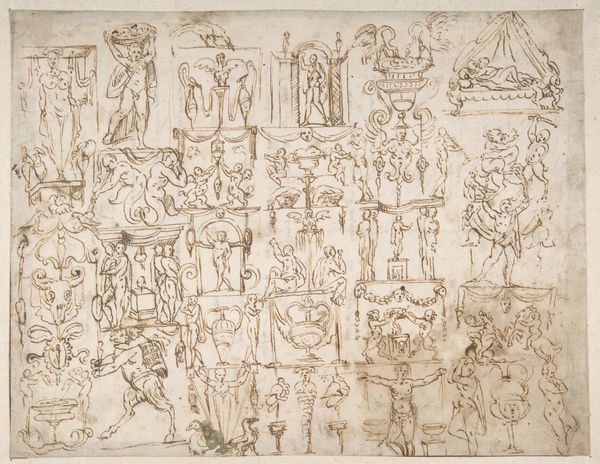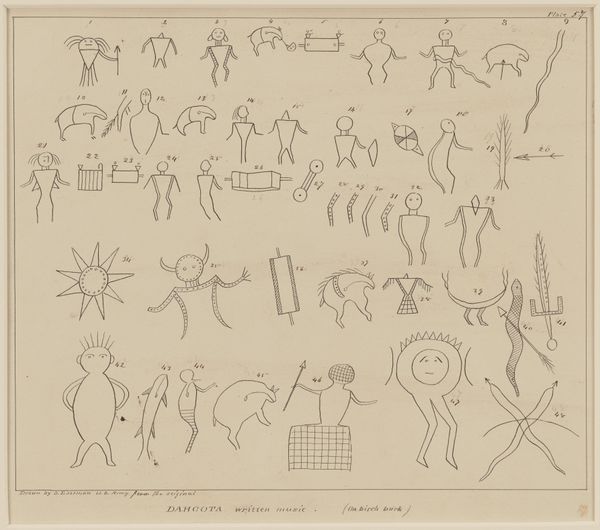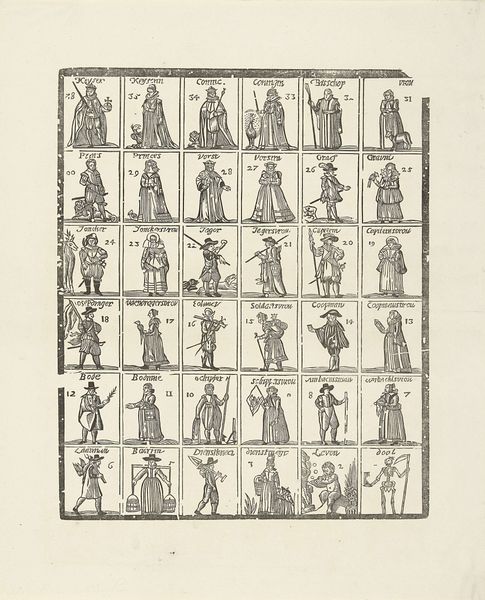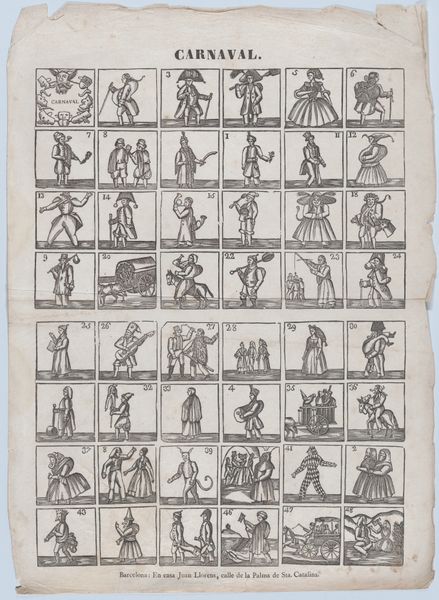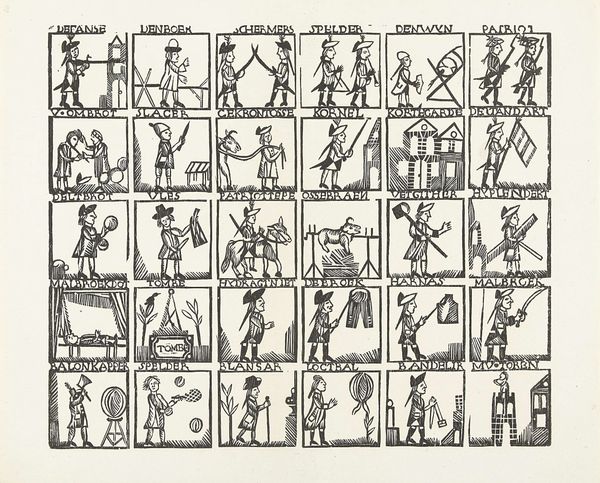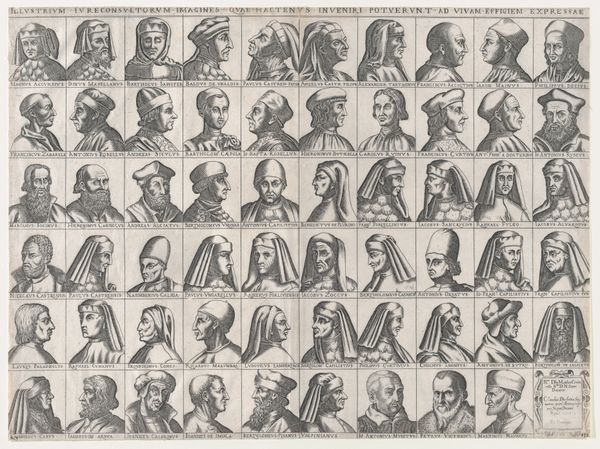
Chessmen (32) and box-board 1785 - 1799
0:00
0:00
metal, sculpture
#
metal
#
sculpture
#
figuration
#
sculpture
#
decorative-art
#
miniature
Dimensions: Height (each king): 3 in. (7.6 cm); Height (each pawn): 2 in. (5.1 cm); Overall (board): 3 3/4 × 17 1/8 × 17 1/8 in. (9.5 × 43.5 × 43.5 cm)
Copyright: Public Domain
Curator: This exquisite set of chessmen, including the box-board, dates from between 1785 and 1799. The craftsmanship has been attributed to Andreas Schluter's workshop in Danzig, serving the Court of Berlin. These miniature figures are rendered in metal. Editor: Wow, it's like a tiny army! I'm immediately struck by the level of detail crammed into each piece. There's a whimsical almost theatrical quality here, too. It really sparks the imagination, doesn't it? Curator: Indeed. Note how the artisans have differentiated each figure through carefully considered pose, costume, and accoutrements. The choice of metal is particularly telling. It is clearly intended as a functional piece, yes, but primarily one intended to communicate affluence and artistry. Editor: I get a real sense of historical drama, a world of pageantry and strategy distilled down to palm-sized figures. And those elephants with the castles on their backs? Totally fantastic! It's almost like stepping into some forgotten legend. I also like that each pawn seems like it has its own personality despite being a uniform rank in the overall structure. Curator: The materiality speaks volumes. The metallic rendering ensures that the play of light further enriches the object’s aesthetic and imbues it with status. Its placement in the Met highlights it’s role as fine art not just a tool. The entire design adheres to principles that showcase royal symbolism and reflect the grand ambitions of the period, particularly under the patronage of powerful courts like that in Berlin. Editor: Totally! Looking closely, you can imagine them in candlelight. I wonder about the people who played with these, what grand strategies were hatched over this very board. And who chose sides? You’re not just playing a game here but participating in a tiny retelling of larger power struggles. Curator: Quite right, the interplay between functionality and representation of power and historical consciousness encapsulates the values of the era in miniature form. A really unique example of figuration. Editor: A compelling combination of craft, strategy, and theatre frozen in time! What an interesting perspective. I appreciate you revealing how art and the context in which it was made allows you to decode culture and aesthetic practice in a very particular point in history.
Comments
No comments
Be the first to comment and join the conversation on the ultimate creative platform.
